Six lessons to improve advertisement’s performance
Published on 04 10 2022What is the stopping-power of your new social video? Is your tv commercial capable of breaking through the clutter? What will be the impact of your campaign? Knowing that 65% of campaigns fail due to bad creation, while on average only 10% of the total budget is spent on creation, it can therefore not hurt to pre-test campaigns and improve advertisement’s performance before going live.
Pre-testing makes it possible to know how an advertisement is judged in comparison to other advertisements prior to its release, and if its message comes across. It also lets you know to what extent it is able to hold the viewer’s attention. Getting attention also depends on the attitude towards advertisements, which differs between countries.
STRONG ATTITUDE DIFFERENCE TOWARDS ADVERTISEMENT BETWEEN COUNTRIES
Fifteen years ago, the attitude towards advertisement was completely different than it is now. Meanwhile, advertisers are now fighting for attention. There is no other place on earth where advertisers face such a great challenge as in the Netherlands: 87% simply do not like advertisements, and 41% also changes channels as quickly as possible. Conversely, in Germany and France, 37% react positively to advertisements and stay tuned to watch during advertisement blocks. In the UK more people enjoy advertisements than change channel as quickly as possible when it starts. Advertisers in India have it easy; 76% like advertisements and watch them.
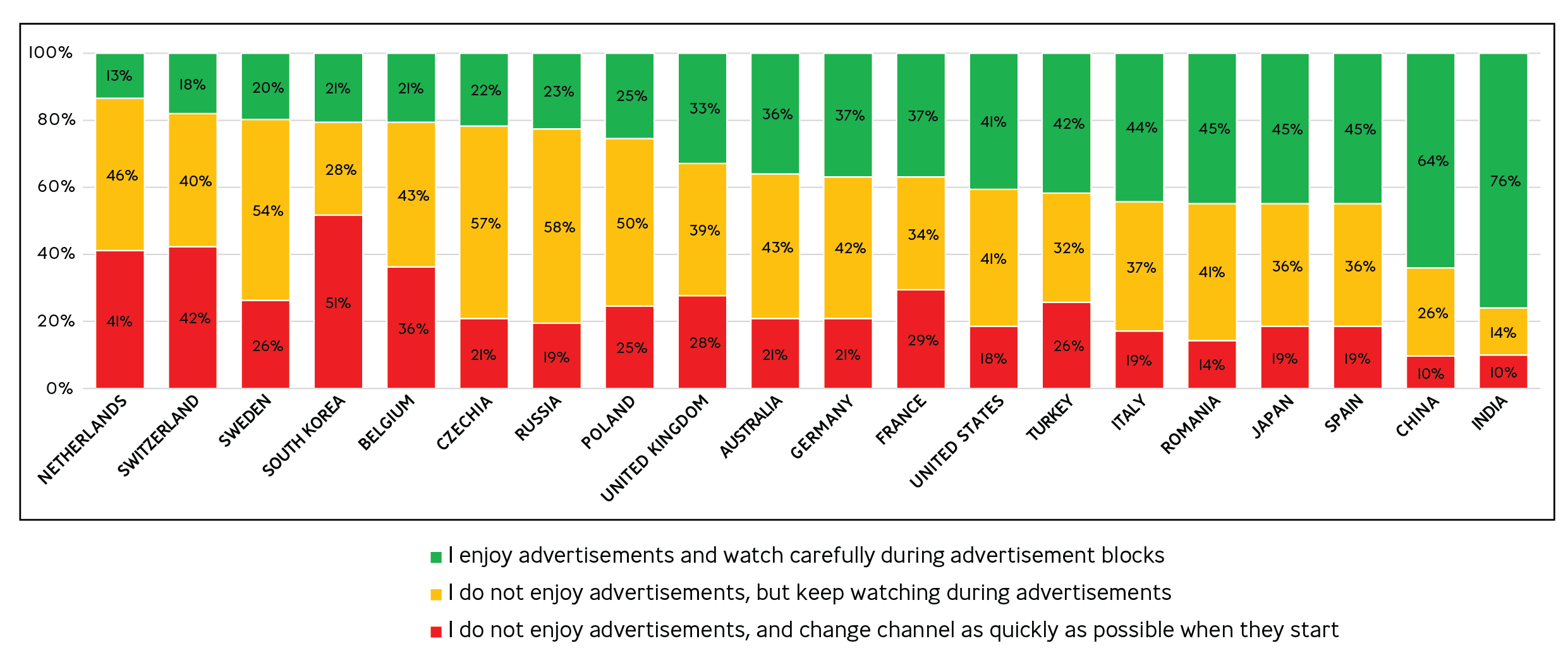
Thousands of advertisement pre-tests for many A-brands give advertisers practical insight into how to improve advertisements and ROI of their marketing efforts. We will present these insights in six consecutive lessons.
LESSON 1: BALANCE BETWEEN BEING DISTINCTIVE AND UNDERSTANDABLE
The first factor to positively influence viewer behaviour is a good balance between being distinctive and understandable. On the one hand, the advertisement must fit the brand and be easily understood. On the other hand, being distinctive is an important factor that influences the amount of attention it gets. This places the “creatives” in a challenging position of weighing the options. The creative expression must be distinctive to stand out, but also be simple and directly understood. It is in the combination of these two factors that it often goes wrong. It helps to keep the advertisement enjoyable and funny to ensure that the viewer continues to watch it in its entirety.
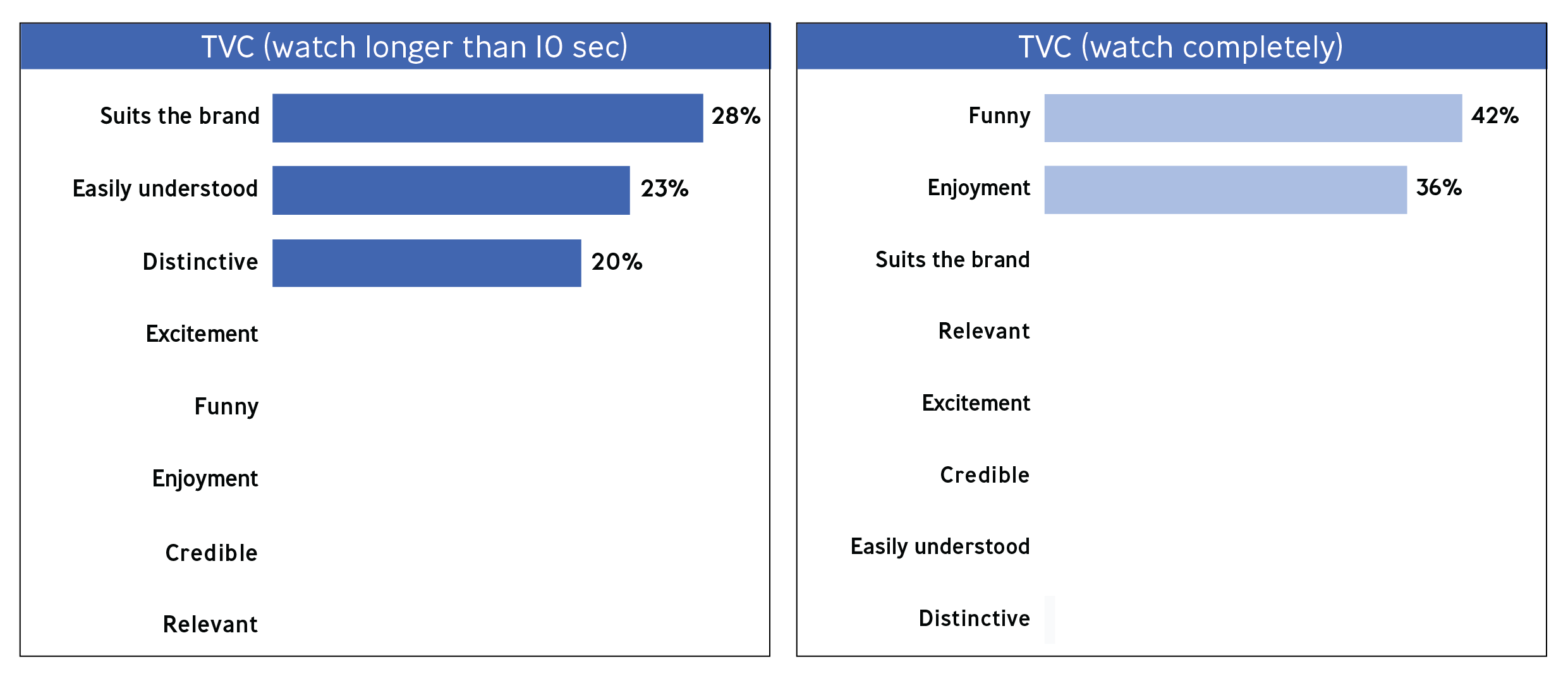
LESSON 2: USING THE BRAND LOGO IN THE BEGINNING IS A NATURAL MOMENT TO ZAP
The use of the brand logo is an important tool and a crucial brand asset when it comes to ensuring that the viewer links the advertisement to the correct brand. The immediate use of the brand logo is, as we know, of great importance for online and social releases, in order to ensure sufficient brand recognition. In the last few years, we have also seen an increase in advertisers’ use of this technique in offline media, such as TV and radio. Showing the brand logo during the advertisements’ first seconds is often a natural moment for the viewer to zap. Introducing the logo halfway during the advertisement has minimal influence on the viewer’s zapping behaviour.
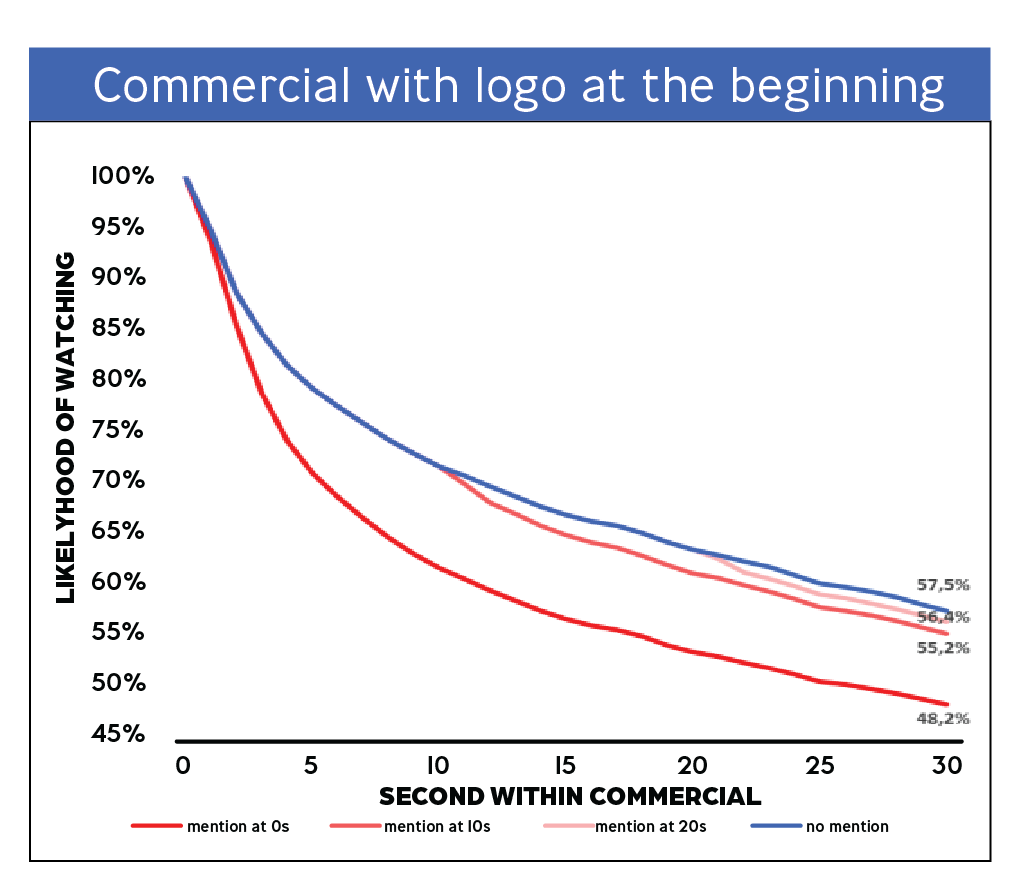
LESSON 3: IMPACT OF BRAND MENTIONS ON BRAND RECOGNITION
Attention is not everything. How often does it happen that you have viewed an advertisement several times and still do not know for sure whom it is sent from? An advertisement is only really effective once the brand relays to the viewer. Here too, research has brought insights. The art lies in building several brand-mention-moments within an advertisement. The more moments, the greater the brand recognition. The use of audio brand recognition has more effect than visual brand recognition. It is, however, also important to remember that brand mentions or logos also cause more zapping (see Lesson 2). The use of other known brands also helps; that is if they are recognised for a millisecond and associated with the advertised brand. Some good examples are Nike’s tagline “Just do it”, and George Clooney being an ambassador for Nespresso.
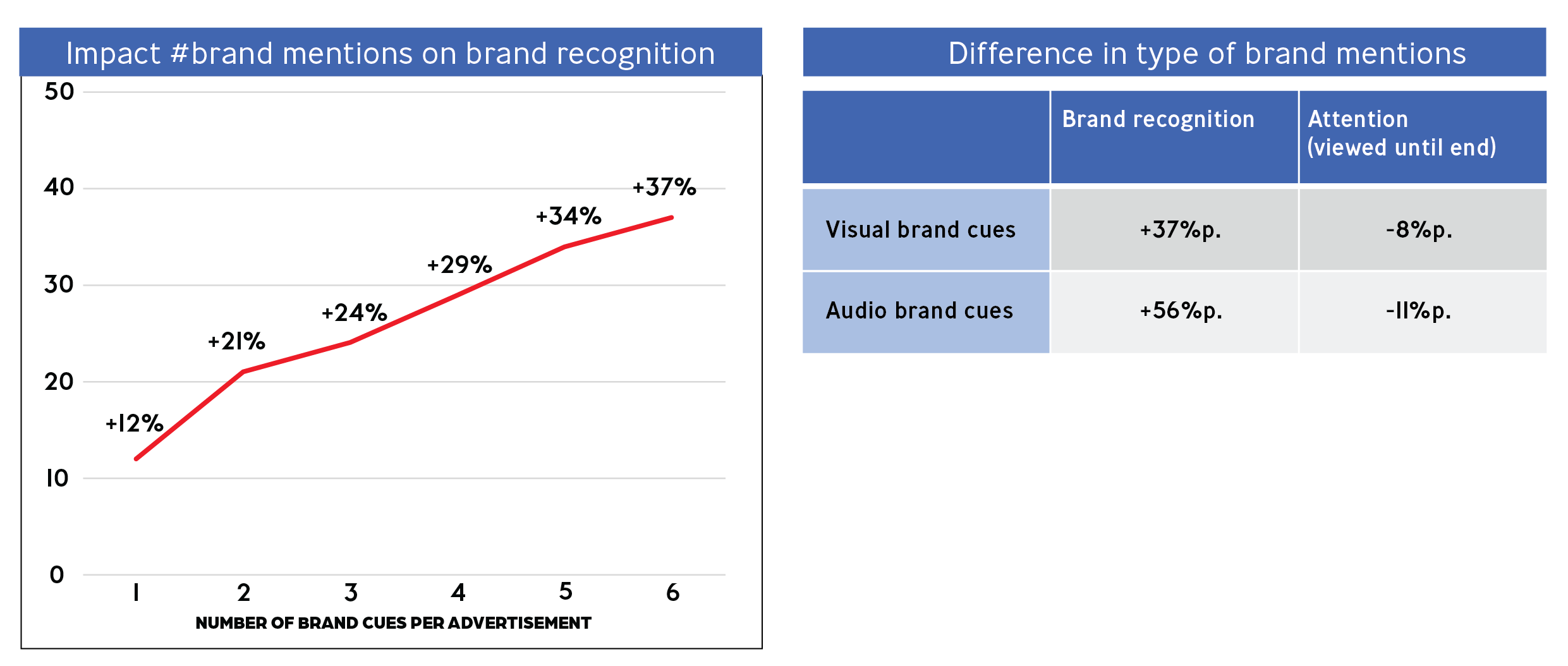
LESSON 4: THE CHANNEL SELECTION IS CRUCIAL FOR ATTENTION
The attention given to an advertisement differs greatly per channel. What does continuous research reveal? Radio and TV score the same when it comes to fully listen or watching an advertisement till the end (in the images the scores are indexed for channel comparison). The battle for attention on your laptop or computer scores lower with an index score of 79. The battle for attention on a mobile phone scores the lowest. This is also the case for another research conducted by DVJ: Consumers do not watch for longer than 1.8 seconds on average at an advertisement on social. If an advertisement scores high on engagement on social, the maximum attention span is no more than 5 seconds.
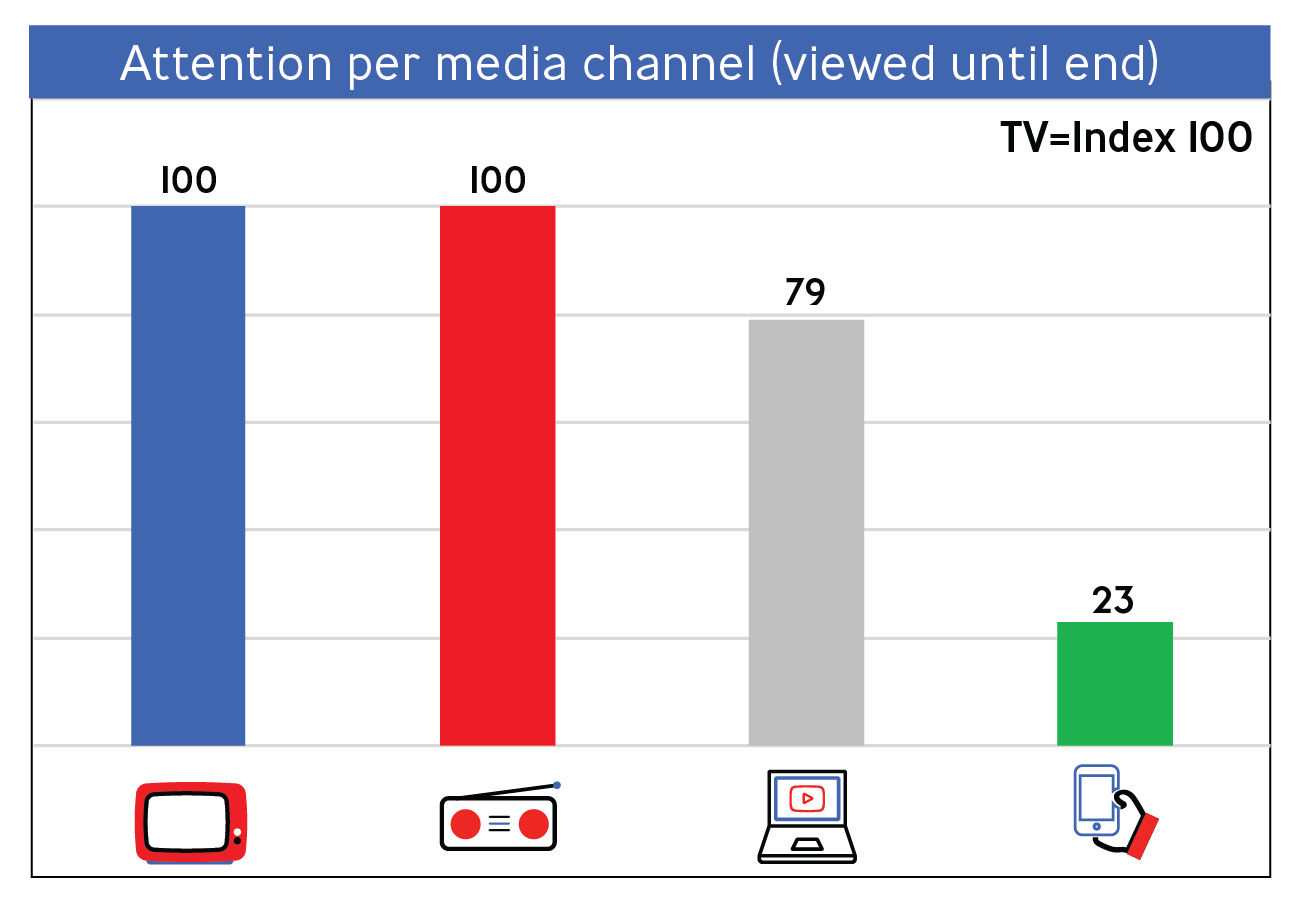
LESSON 5: SONIC BRANDING AS DIFFERENTIATING BRAND ASSET
Release with sonic branding- a recognisable tune or other sound related to the brand- increases brand recognition by 8%. More and more brands develop auditory identity, based on brand values and brand promises. A recognisable voice works best. Think of, for example, Frank Lammer’s voice in a TUI advertisement, or the tune “Echt Hema”, but also of specially composed music. Just as a visual brand identity can be suited to each medium, this can also be done with audio.
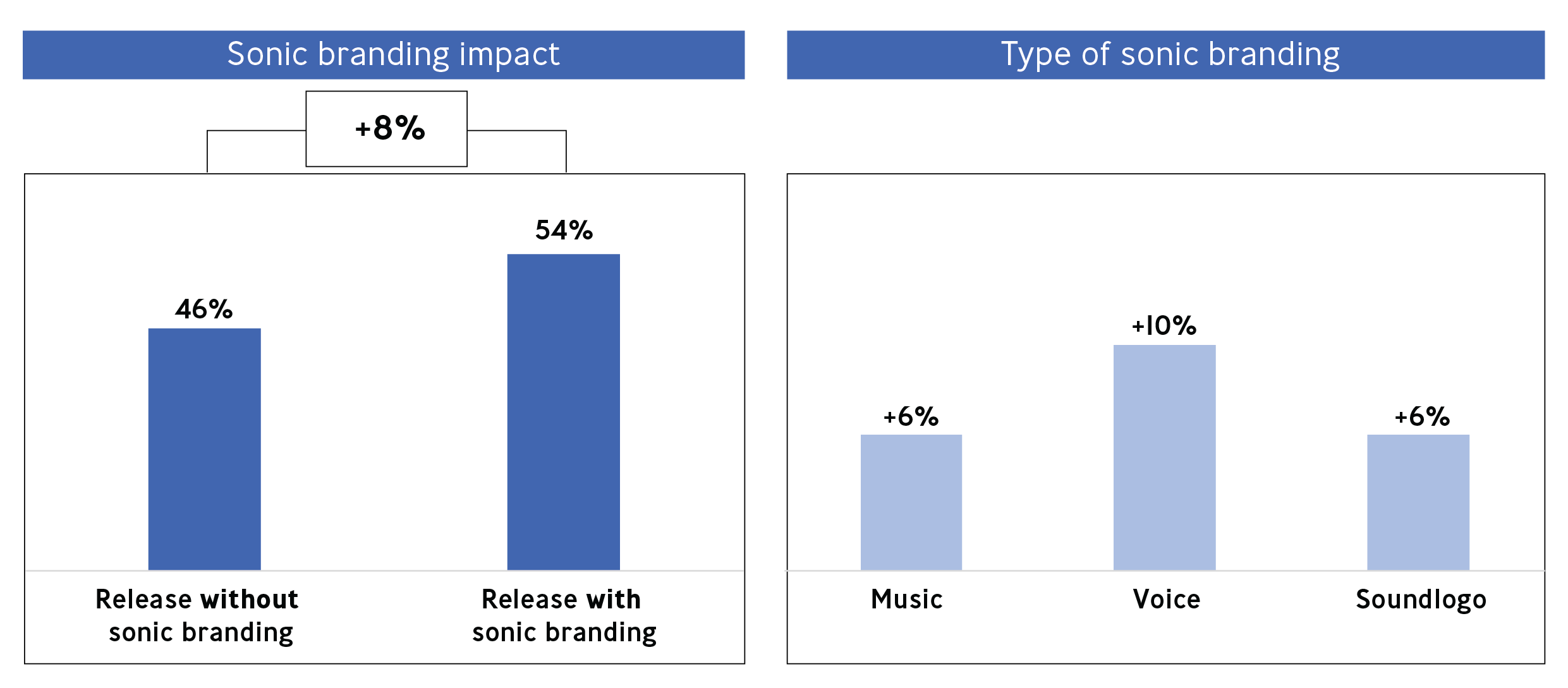
LESSON 6: OPTIMAL SPOT LENGTH FOR BRAND TRANSFER
Research has shown that the optimal time for a television advertisement to reach brand transfer is between 20 and 30 seconds. Brand recognition is in fact the highest for an advertisement of 30 seconds. When it comes to remembering the message, the optimal spot length lies between 20 to 30 seconds. An advertisement of less than 20 seconds is too short to bring over the message, whereby it is not understood well enough. Especially now that advertisements are becoming more expensive, many advertisers are looking for possibilities to use shorter spots. It is important in this to remember that 20 seconds is the minimum to still be able to create a strong brand transfer.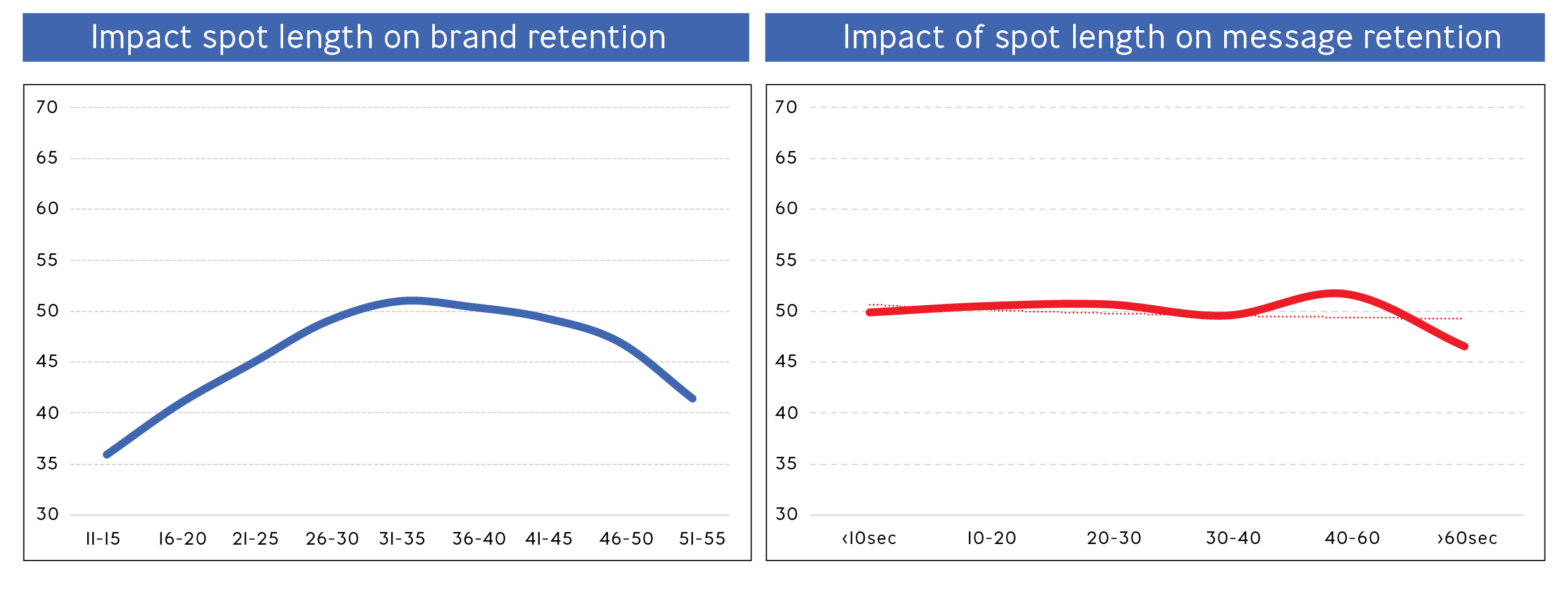
OTHER SUCCESS FACTORS IN CREATION AND SUMMARY OF THE 6 LESSONS
Experience teaches us that for a message to be well received, it is important to build in a maximum number of messages in a commercial, and, how difficult it may be, to build in a moment of rest. As for television, a pleasant transition in shots gives people the time to process the message, whereas they find fast editing unpleasant. What also scores well is positivity, eating, animals, children, and more than anything, a problem-solving structure. Something as sad as an illness, when presented with a good solution, can result in attention retention and a positive judgment of the advertisement.
In summary: we are able to learn a lot from advertisements’ performance. Together with the insights gathered during DVJ’s research, and thousands of pre-tests, we have formulated 6 lessons. From this, it seems that a commercial must be understandable and distinctive, and at the same time funny and enjoyable. We have also learned that brand mention can ensure that people will associate the advertisement with the brand, but that it can also lead to more zapping, that the channel choice is crucial to the attention for an advertisement, that music and voices are important for retention and that the length of the spot must be between 20 and 30 seconds.
There is no such thing as a perfect advertising campaign, but it helps if you take these lessons into account and pre-test advertising before going live. Concrete and predictive advice based on pre-testing helps to improve advertisements to break through the clutter, get your message across, realize brand recognition, and improved ROI of marketing efforts. Sounds like a dream comes through, don’t you think?